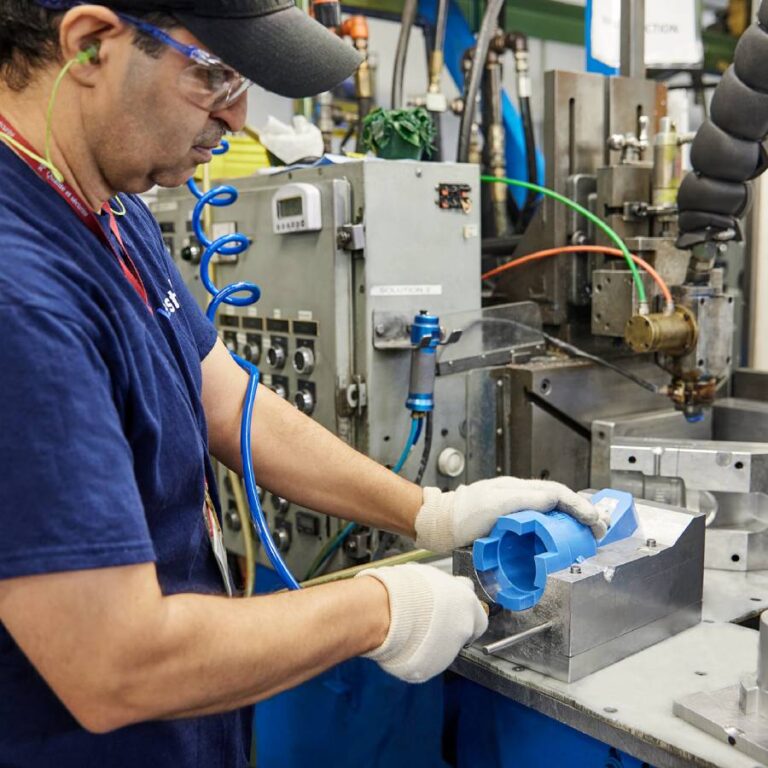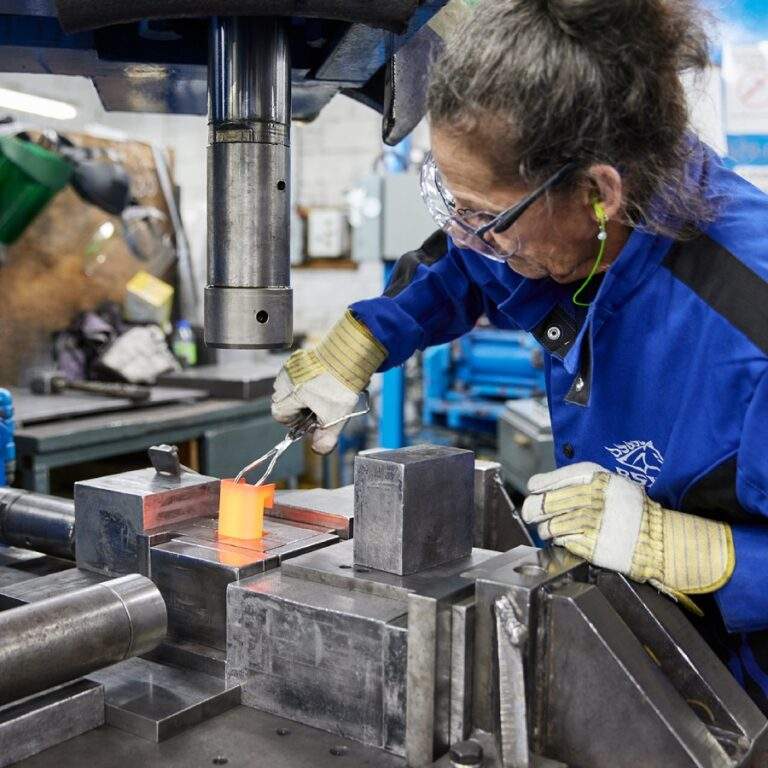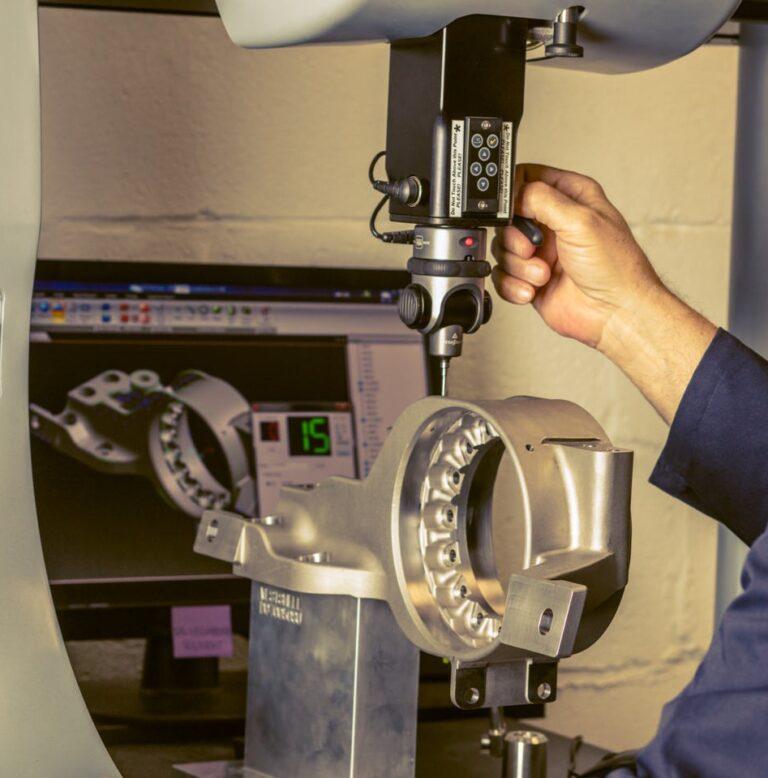In the complex world of metal fabrication, the ceramic shell investment casting process is a widely used technique for producing high-precision metal parts. This process offers exceptional quality, but it has risks.
Errors may occur at various stages, thereby compromising the final result. However, at Vestshell, we have perfected this process, taking every precaution to ensure impeccable results. With our expertise and commitment to quality, we manage to produce perfect parts.
Understanding the investment casting process
Lost wax casting is an old process but still widely used to manufacture complex and precise metal parts.
The process begins with creating a wax model, a precise step where every detail and subtlety of the final piece is carefully captured. This wax model serves as the foundation for the entire casting process, ensuring the precision and accuracy of the finished product. Once the wax model is completed, it is meticulously coated with several layers of ceramic slurry to form a sturdy, heat-resistant mold.
Next, the mold is subjected to high temperatures to melt the wax, which then flows through specially designed channels, leaving an exact cavity of the part inside the mold. This cavity is then filled with molten metal, which takes the precise shape of the desired part. Once cooled, the mold is destroyed to reveal the cast metal part, ready to be finished and used in various applications.
This investment casting process with ceramic shells is extremely popular due to its ability to produce high-quality parts with fine details and intricate shapes. It is widely used in aerospace, automotive and medical industries, where precision and quality are essential. Thanks to its flexibility and versatility, this process offers an efficient solution for manufacturing metal parts requiring high precision and an impeccable finish.
Optimizing your casting for precision and strength
Optimizing your casting for precision and strength is essential to ensure the quality and durability of the parts manufactured. Here are some steps to follow to achieve this:
- Choosing suitable materials guarantees mechanical strength and maintains tight dimensional tolerances.
- Precise models, created with computer-aided design software, capture the details of the final part.
- The correct casting process, such as sand or investment casting, should be selected based on the part’s complexity.
- A well-designed mold and efficient cooling techniques are necessary to avoid defects.
- Precisely controlling the temperature during melting and casting is crucial to avoid solidification problems.
- Rigorous quality control procedures, including non-destructive testing, ensure part accuracy.
- By optimizing manufacturing practices, we obtain high-quality parts that meet the most stringent requirements.
The role of shell molds in flawless investment casting
Optimizing your casting for precision and strength is essential to ensure the quality and durability of the parts manufactured. Here are some steps to follow to achieve this:
Shell molds play a crucial role in the investment casting process, helping to produce high-quality, defect-free parts.
1. Creating the Mold: Shell molds are made using a coating process to form a solid shell around the wax models. This coating usually comprises several layers of refractory material, such as quartz sand or ceramic, which are applied to the wax models.
2. Thermal Stability: Shell molds provide excellent thermal stability, making them able to withstand the high temperatures of the casting process. This ensures the mold does not warp or break while pouring molten metal.
3. Dimensional accuracy: Shell molds provide castings with high dimensional accuracy. The coating process allows the details of the wax models to be faithfully reproduced, ensuring that the finished pieces match the drawing specifications exactly.
4. High-quality surface: Shell molds produce castings with a smooth, uniform surface, reducing the need for additional finishing work. This saves time and post-processing costs while ensuring optimal surface quality.
5. Defect Reduction: Shell molds help reduce casting defects such as porosity, blowouts and cracks. The coating process achieves a homogeneous internal structure in the mold, ensuring uniform solidification of the molten metal.
Troubleshooting common issues in investment casting
Lost wax casting is a complex process, and despite every effort to perfect it, problems can sometimes arise, such as cracks, surface defects, metallic inclusions, porosities or shrinkages.
To avoid various manufacturing problems, it is crucial to take specific precautions. At Vestshell, our team of experienced specialists makes all the necessary efforts to counter these problems.
For example, to prevent cracks, it is crucial to carefully control casting parameters, such as molten metal temperature and mold filling speed, and to choose appropriate mold materials.
In the case of surface defects, one must carefully clean and prepare the mold before casting and handling the wax models with care.
For metal inclusions, it is necessary to maintain a clean casting environment and filter the molten metal before pouring it into the mold.
Understanding the underlying causes of these problems and implementing appropriate corrective measures can produce high-quality, defect-free castings.
Ensuring quality control in the casting process
Ensuring quality control in molding is crucial to guarantee molded parts’ reliability, safety and conformity. To do this, several key elements must be taken into account.
Firstly, raw materials such as metal alloys, ceramic coatings and bonding agents must be inspected to ensure their quality and compliance with the required specifications.
Then, process parameters such as temperature, pressure, curing time and casting speed must be closely monitored to ensure optimal casting conditions and avoid part defects.
Additionally, the molds and patterns used in the casting process should be inspected regularly for defects, wear and damage that could compromise the quality of the castings.
It is also essential to measure and verify the dimensions of castings to ensure they conform to product specifications. This can be achieved using measuring instruments such as callipers, micrometres and coordinate measuring machines (CMM).
Finally, non-destructive testing such as ultrasound, radiography, and liquid penetrant testing can detect internal defects in castings without compromising their structural integrity. By implementing these rigorous quality control procedures, foundries can ensure the production of high-quality castings that meet performance and durability requirements.
Similar articles


